5 Venomous Snakes That Every Backpacker Needs to Know

Timber rattlesnake - Crotalus horridus atricaudatus, poisonous, white background
We’re sharing this article for free to help hikers get to know their natural world a little better. Become an Outside+ member and get access to everything we publish.
Uh oh, was that a snake or a branch? Movement in those bushes or some wind? A rattle or my imagination? Although most snakes in North America aren’t venomous, there are a few exceptions—and every backpacker needs to know how to recognize them. We sat down with William Hayes, venomous reptile expert and professor of biology at Loma Linda University, and learned where you might encounter some common rattlers and other venomous snakes.
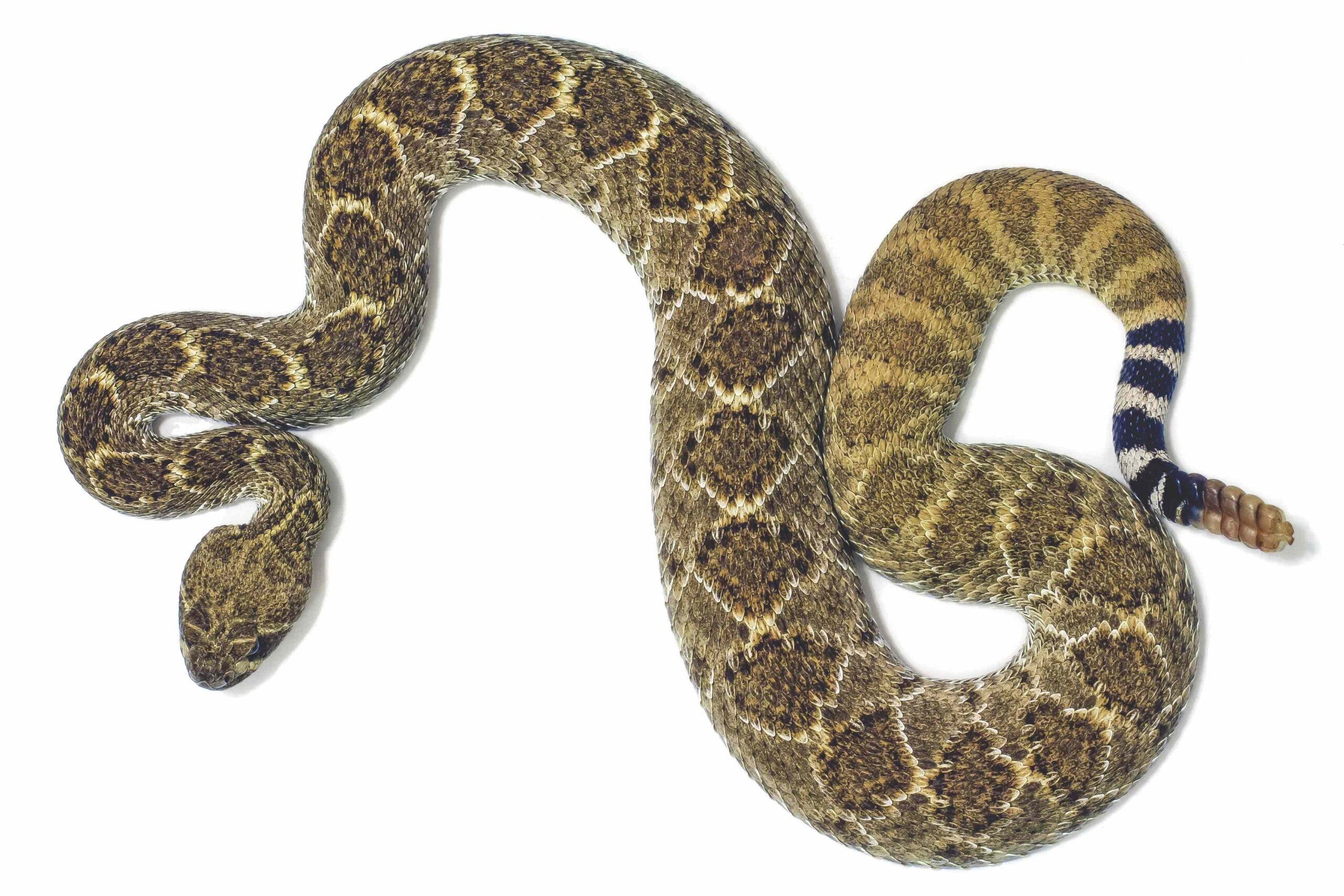
Western Diamondback (Crotalus atrox)
If you don’t hear the distinctive rattle first, you’ll know the western diamondback by its triangle-shape head and the distinctive brown diamond patterns on its back. Also notice the black and white bands right above the rattle. This snake’s habitat ranges from Southern California to Texas and includes grasslands, deserts, and rocky areas. Diamondbacks are the largest and most defensive rattlesnakes in the U.S., and can deliver a severe bite. Fortunately, “it doesn’t want anything to do with us,” Hayes says.
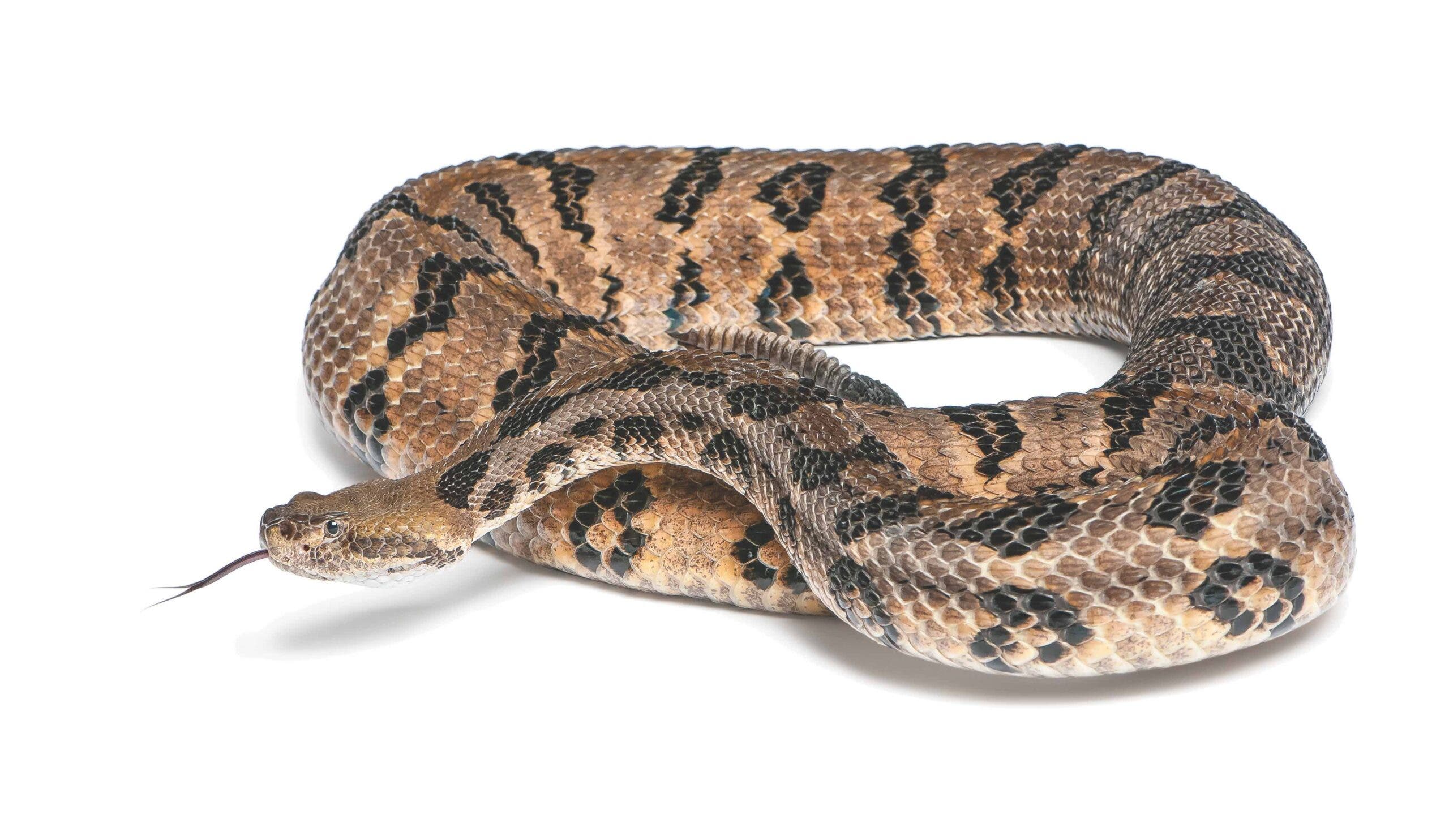
Timber Rattlesnake (Crotalus horridus)
Native to much of the eastern and central U.S., mostly in forested areas, the timber rattlesnake can vary in color from yellow to black. It usually displays a pattern of dark chevron stripes that runs down its back and has a distinctive triangle-shape head. It is the only large rattlesnake (up to 6 feet in length) in almost all of its range.
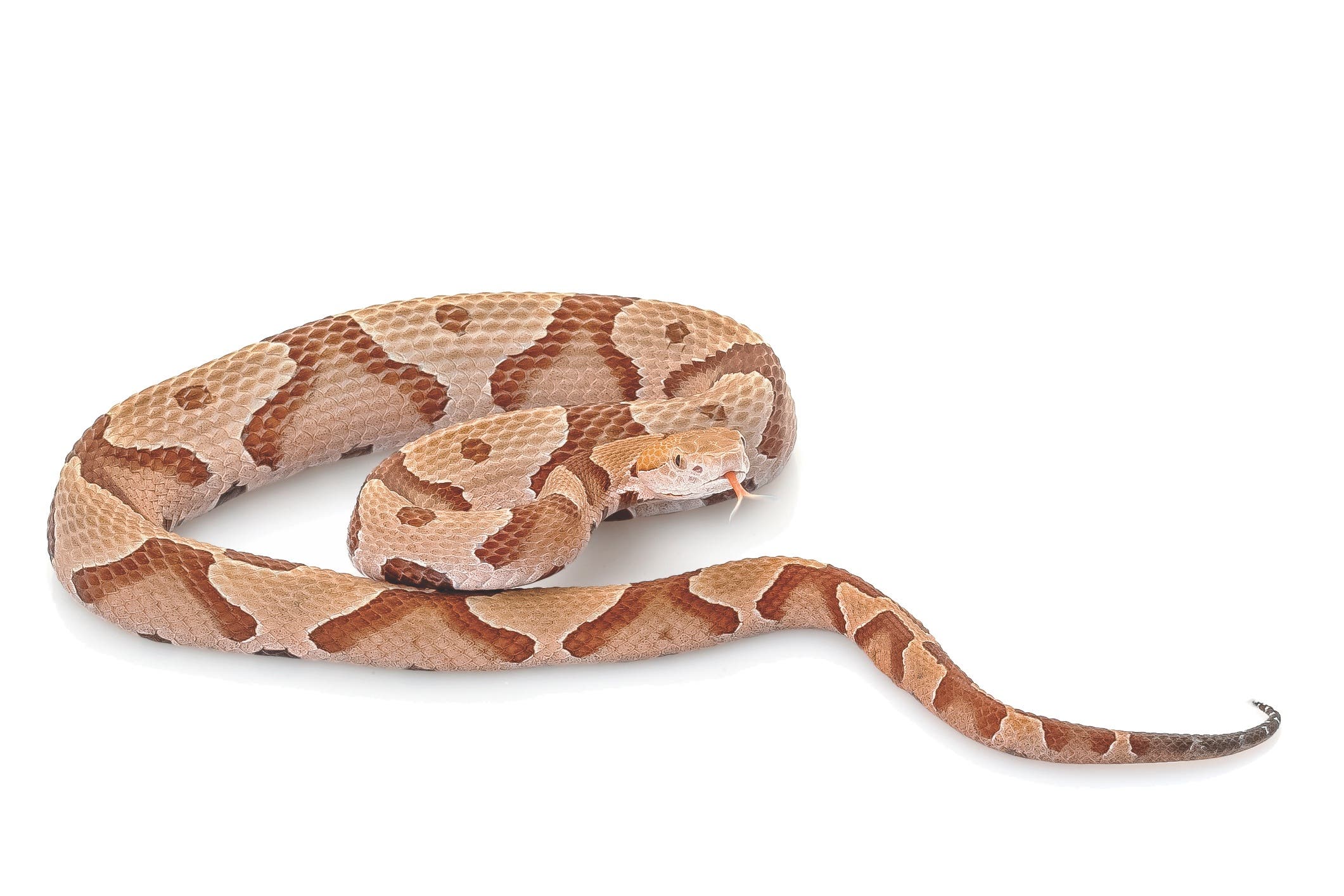
Copperhead (Agkistrodon contortrix)
Not as big as a rattlesnake (it measures in at around 2 to 3 feet), the copperhead’s orange coloring with darker hourglass-shaped crossbands will help you identify it. “It’s truly elegant,” Hayes says. It lives in grasslands, scrublands, and forests from West Texas to the Atlantic. Because it has less venom, which is also milder in toxicity, the copperhead tends to inflict a less severe bite (you should still seek medical attention if you’re bitten).
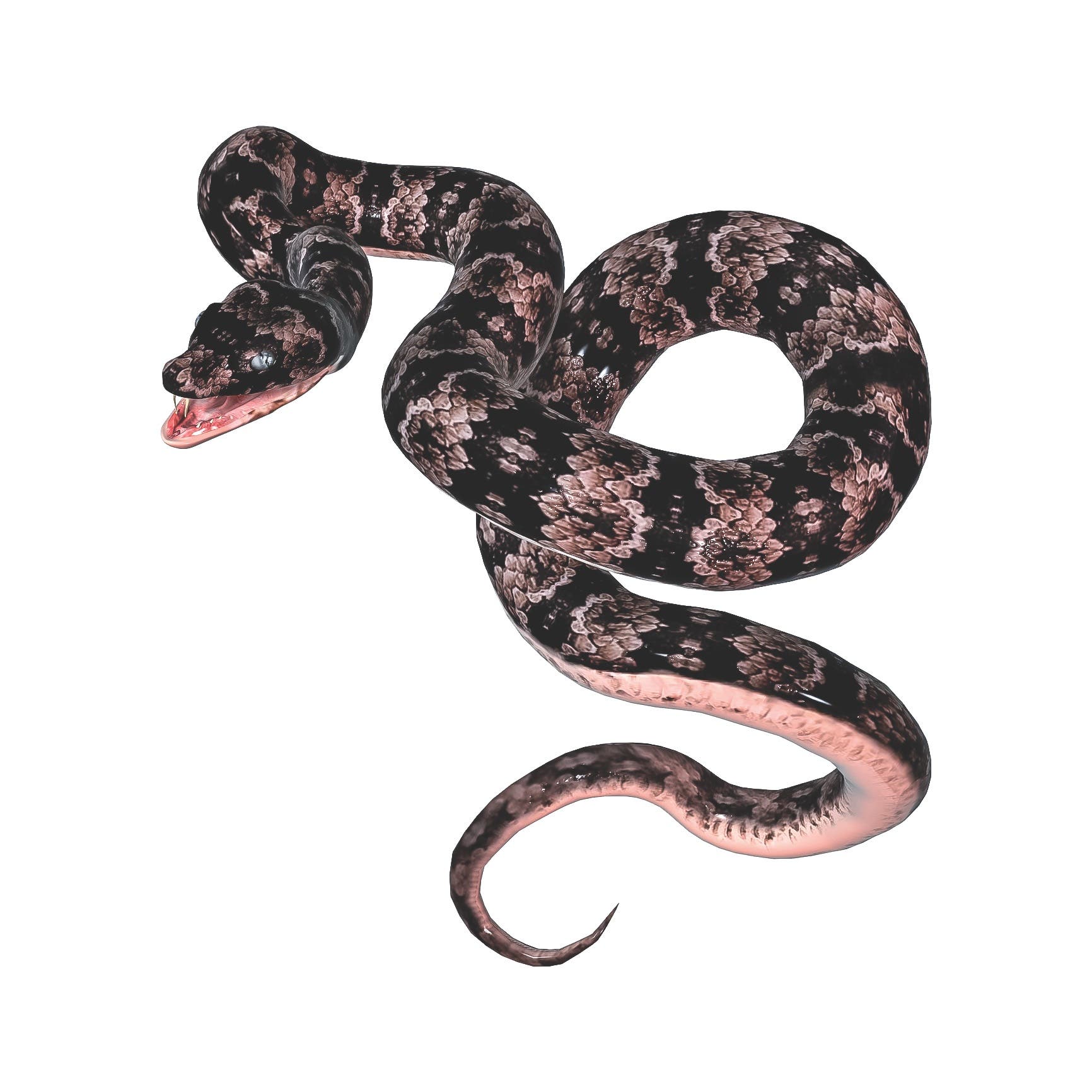
Cottonmouth (Agkistrodon piscivorus)
Also known as the water moccasin, the cottonmouth gets its name from its white mouth, which it opens in a defensive display when confronting threats (if you can see it, you’ve probably gotten too close). You’re most likely to see it in the Southeast, though it ranges as far west as Texas. Closely related to the copperhead, this snake is darker, sometimes blackish, with much less distinctive banding, and often a bit larger. The world’s only semi-aquatic viper, it is usually found in or near water.
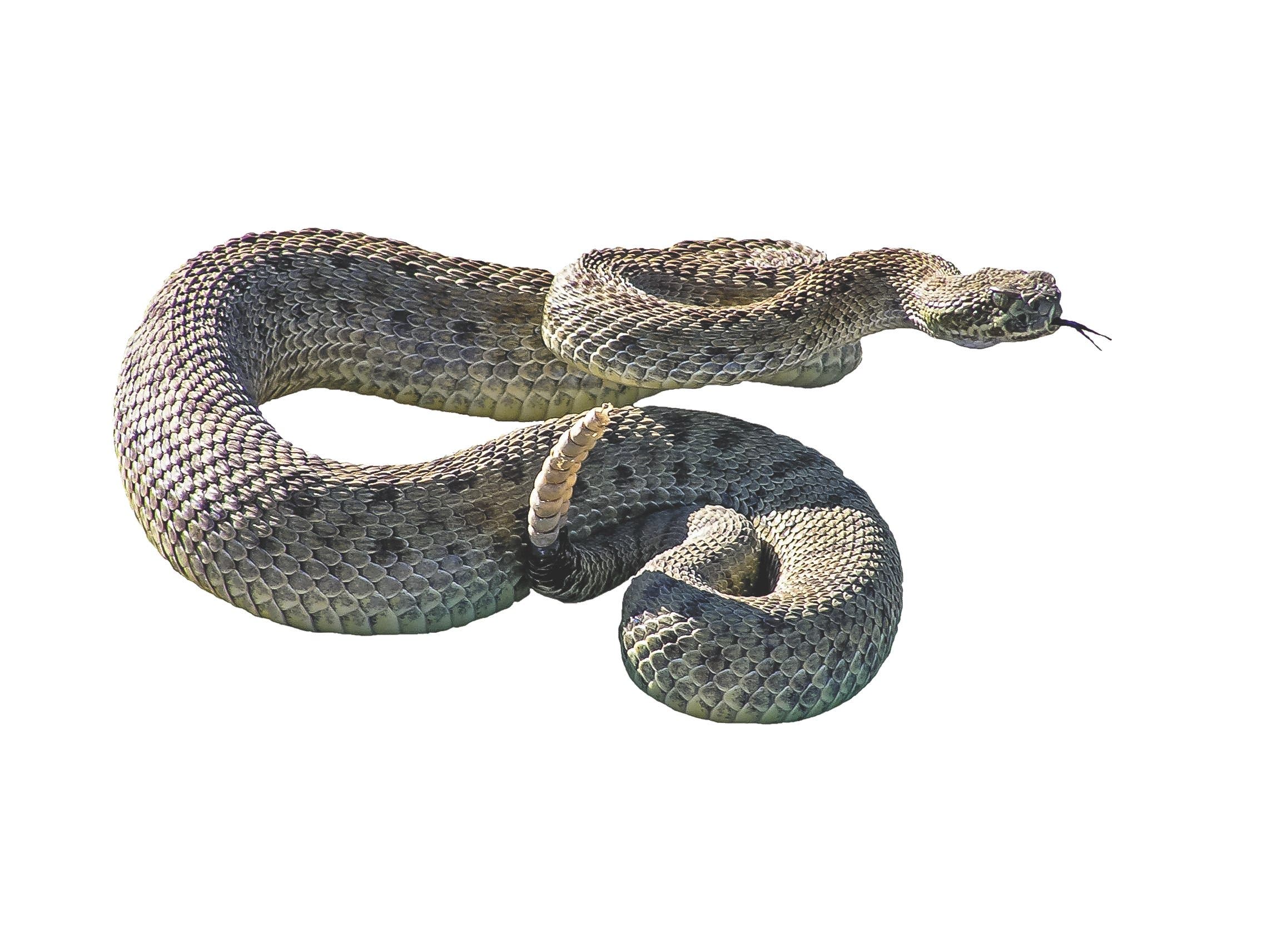
Prairie Rattlesnake (Crotalus viridis)
As the name implies, this rattler is found in the plains regions of the U.S., though it also lives in the mountains of New Mexico, Colorado, and Wyoming. Generally smaller than the other two rattlesnakes mentioned here (3 to 4 feet), it is greenish-brown in color with darker brown patches along its back. The prairie rattlesnake can be defensive and is one of the few rattlers shown to be able to control the amount of venom it injects when feeding on different species and sizes of prey.
Sign up for Outside+ today.